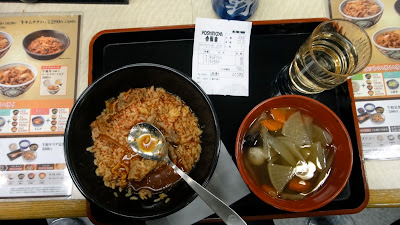As your correspondent has written on this blog before, Tokyo isn’t nearly as expensive as it’s made out to be. You can live largish here on the cheap. One reason? Deflation.
“Deflation?” you interject for the sake of narrative. “Awesome! Everything is cheap!”. Actually, it’s not quite so awesome as that.
The Economics 101 class you mostly slept through taught you about price/wage spirals. One version goes like this. For some reason – say, the end of a massive Japanese bubble economy in the 80’s – demand for goods falls, so prices get cheaper to attract customers. Manufacturers can’t achieve the same profits, so the amount of labour they can support falls. Competition for fewer jobs among workers increases, so workers are prepared to accept lower wages. With lower wages, consumers can’t buy as many goods, so demand for goods falls. Prices get cheaper, so manufacturers can’t achieve the same profits… and so on.
So what does this mean? Cheap beef bowls! The prices at Yoshinoya, the ubiquitous beef bowl chain, are a sign of the times. By way of introduction, Yoshinoya is a great after-work dining choice for the illiterate and terminally single. Buy a ticket from a vending machine, hand it wordlessly to the attendant. Inside a minute, he sets a tray in front of you with a steaming bowl of fried beef on a heaping of rice, along with pickles and miso soup. You eat it under a blanket of silence broken only by the dreary muzak. You finish your complementary water, sitting alongside the clientele of exclusively male salarymen mournfully eating beside you. You leave after the ten minutes it takes you to bolt it all down. Utility eating at its finest.
Back to economics. When I came to Japan almost four years ago, you could buy the lonely set meal described above in Yoshinoya for about 580 yen (about $7 AUD). Now, the same set goes for about 500 yen ($6 AUD). In the menu below, one of the bowls by itself starts at a very cheap $3.30 AUD.

The set below – a spicy Korean beef bowl plus vegetable miso soup and water – costs a grand total of 400 yen. That’s around $4.80 AUD for a complete, filling meal, which is cheaper and nutritionally superior to what you can get at McDonalds.

Using the staple beef bowl as a price index is widely used as an informal economic indicator in Japan. If you want to read more about this exact topic, the New York Times has a feature which likely involves actual research and editing.